At a time when the establishment of the Horseracing Integrity and Safety Authority has put the quest for unified national standards in the spotlight, there's one facet of the sport where the rules are rather disjointed without a consensus of opinion anywhere on the horizon.
When it comes to draw dates for races, horsemen who race in several jurisdictions would be wise to keep condition books handy so they do not mix up which day they must enter their horses.
At the New York Racing Association, Churchill Downs, Keeneland, and Southern California tracks, it can vary between 72 hours for weekend cards and up to five days in advance for midweek programs. At Fair Grounds Race Course & Slots, it's a week. Oaklawn Park generally draws its races five or six days out.
"It can be nuts," trainer Mark Casse about the different schedules. "That's why I make it the job of my assistant at each track to stay on top of it."
Gulfstream Park recently became the latest track to tinker with its draw schedule, moving earlier this month from a three-day draw for Saturdays and Sundays and five days for weekdays to a seven-day draw for each racing program. There were some pros and cons voiced by both horsemen and racing officials to the new schedule and beginning with the Dec. 26 start of Gulfstream's championship meet, it will shift to a six-day draw.
"I'm not against trying new stuff. That's how you find some positive things," said Mike Lakow, Gulfstream's vice president of racing operations. "It's an experiment. We tried seven days and felt it wasn't the right move so we moved to six days. Saturdays are our big days and most of those horses work on Saturday. I don't want the trainers entering while their horses are working on the track. It just doesn't make sense to me. That's why I felt strongly about moving away from seven days. Give them a day to check on the horse the next morning before entering."

Lakow said he was ambivalent about the shift to seven days, reflecting the wide variety of opinions on the issue from handicappers, who receive additional time to scour past performances, to horsemen, some of whom love it for the time it gives them to plan and prepare for a race and others who dislike it because they are entering for races before they can work their horses or allow them to cool down after a workout.
In Florida, the push for seven days came from the Florida Thoroughbred Horsemen's Association. Trainer Joe Orseno, president of the horsemen's group, said a main impetus for the change was delays in finalizing the cards with the 72-hour draws.
"The biggest problem we had with three days is that the overnight (entries) would come out too late in the evening for any kind of pre-race arrangements. We needed more time. Plus it gives owners more time to make arrangements to come to Gulfstream for the race," Orseno said. "I think everyone will be comfortable with the six days."
Orseno also said the longer draw schedule can help the claiming game, giving horsemen more time to check out horses and get their finances in order.
"There are a few trainers who didn't like it, but in general, I think people were happy with seven and going to six will not be an issue," he said.
Casse said the switch from three days to six did not cause a major problem for him and that the earlier draw was helpful in moving horses from his Ocala training center to the racetrack.
New York-based trainer Christophe Clement, who winters in Florida, also had no issues with the change.
"It's easier because you can plan your training around it," Clement said. "It works for me. I work my horses a week out, so I am OK with it."

Gulfstream-based Saffie Joseph Jr., the leading trainer at last year's championship meet at the Hallandale Beach track, had a different take. He said these days, when most trainers work their horses a week before a race, entering horses before they work out or cool out was not an optimal situation.
"I don't think six or seven days is ideal. It's a long way out and things change overnight with horses. You're entering before you breeze. My horses breeze Saturday at Palm Meadows and Sunday at Gulfstream. I don't think it helps field size with the scratches and scratches can ruin the races for handicappers," Joseph said. "I understand that with 72 hours there was a concern with medications and other issues but I'd rather see it at four or five days."
One potential problem with four- or five-day draws is that at some racetracks it would call for Saturday and Sunday draws on Mondays and Tuesdays when racing offices are closed.
Lakow also said he was concerned with the impact on field size with horses entering and then scratching out of an already small field due to an issue that popped up after entries were taken. With the three-day draw, he said, those races would be replaced on the card with a race that attracted more horses.
"I can see benefits for the horsemen but the seven days cost us some scratches and lost turf races," Lakow said. "There are some variables that can be problematic."
One of those times occurred in the second race Dec. 11 when a field of six for a $35,000 starter optional claiming race on the main track scratched down to three horses.
Though Joseph won the race with The Distractor, who was a 3-5 favorite, he said instances like that are not good for the game.
"I was the beneficiary of winning in a three-horse field but in reality I know it's not good in the long run for us. I know some people like it, but is it for the betterment of racing? I say no. We're relying on handle and if you have scratches and short fields we are all going to be hurt. If you handicap a race and there are three scratches it changes your whole outlook on the race," said Joseph, who added that the six-day draw makes it harder for him to help out the racing office and beef up a short field with a last-minute entry.
Orseno noted that the scratches could impact field size but said it's an inevitable issue.
"There are always things that can happen and they will happen whether it's six days or three," Orseno said.
One potential problem with the longer draw period is alleviated at Gulfstream by its Tapeta course. In designing a card with turf races, a racing secretary has to be conscious of the weather, avoiding the use of a plethora of turf races on days when the forecast calls for heavy rain so that the card is not decimated by scratches. With Tapeta rather than dirt the option for off-the-turf races at Gulfstream, horsemen have been much more willing to run their horses on the synthetic surface than a muddy main track.
"We're lucky we have Tapeta," Lakow said. "Without it, if you have to figure out the weather a week in advance and you could get wiped out with a lot of turf races on the card."
The new schedule at Gulfstream reflects different attitudes across the industry in terms of what's too long, too short, or just right for draw days.
For example, NYRA drew its Dec. 17 card on Dec. 14. Meanwhile, Delta Downs, Evangeline Downs, Fair Grounds, Gulfstream Park, Hawthorne Race Course, Lone Star Park, Oaklawn Park, Turf Paradise, and Zia Park had already drawn their Saturday programs by Dec. 13. Fair Grounds, Gulfstream Park, Hawthorne, Oaklawn Park, and Zia Park had their Dec. 18 card set by Tuesday.
Going further into the future, Penn National, Turf Paradise, and Zia Park had their Dec. 20 cards posted a week in advance of race day.
When asked if a standardized six- or seven-day draw period would work in New York, NYRA racing secretary Keith Doleshel said it would be impractical, especially in the warmer months due to turf racing.
"I don't know how comfortable I would be with the six- or seven-day draw. From a racing department perspective, there are a lot of variables that come into play when you are taking entries that far out," he said. "In some cases, horses are entering before they work and here when we have turf racing you are rolling the dice when you card races that far off. We've found that even with five days at Saratoga, sometimes you card turf races and two days later you find out it will pour and you wish you used more dirt races.
"With a year-round circuit like ours when you get closer to entry day you can control some factors in terms of getting entries. It will be interesting to see when some of our outfits get back from Florida to get feedback from them on the six days and find out if they are in favor of it or not."
At Fair Grounds, racing secretary Scott Jones said the New Orleans track moved to the seven-day draw about five years ago and has not encountered many problems with it.
"We all got together and the horsemen thought it would be a good idea to go seven days out so they can plan better. It's great for the owners, too, so they can arrange flights or travel," Jones said. "My initial fear was there would be more scratches because of when trainers breeze their horses, but we haven't seen an uptick in scratches. I'm pleasantly surprised and happy about that."
Two different locales. Two different perspectives. When it comes to draw days, that's hardly surprising.










